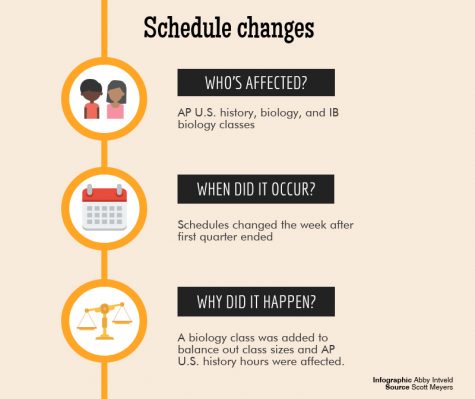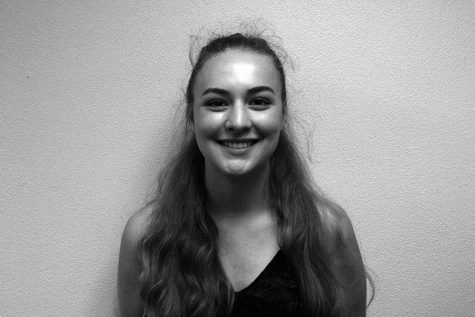Students schedules change at quarter
Hour added to relieve large class sizes
Students wait for AP U.S. history class to begin third hour Tues. Nov. 21. Third hour experienced an influx of students due to schedule changes.
December 1, 2017
When junior Rachel Mattson’s biology and AP U.S. history hours changed, she said it was an easy switch.
“It’s really not that bad, it’s just weird going from second hour to AP U.S. History instead of bio,” Mattson said. “History has a lot more people in it, and biology is a little empty, where it was the opposite before.”
According to Principal Scott Meyers, a biology hour was added to alleviate large class sizes.
“We anticipated thirty students (in a biology class) and it was getting up close to forty,” Meyers said. “We weren’t even at semester yet, and some students change their mind at semester.”
Meyers said the schedule changes happened at the quarter because students were switching into already large biology classes.
“As we start to do more career and college readiness, I think we’re gonna see people attempting classes and maybe changing their minds,” Meyers said. “We don’t like to change this late as much as possible, but if there’s students there, or the schedules shift in some way, we like to remedy the situation.”
AP U.S. history teacher Scott Miller said the changes have unbalanced the numbers of students in his classes.
“It makes it a little tougher to do group projects, because (one class) had to do a presentation individually while the other class got to have partners,” Miller said. “That’s the big challenge, but it’s only for a couple months, and then second semester comes and it gets worked out.”
Meyers said schedule changes do not happen every year, but are most common in classes required for graduation, where higher level classes are condensed, and standard level classes are added.
“I don’t think it’s going to be a large scale issue, because I know that parents and families are very thoughtful when they register,” Meyers said. “It’s usually these smaller adjustments in the fall that we have to make, and we try to make them the least disruptive as possible.”




